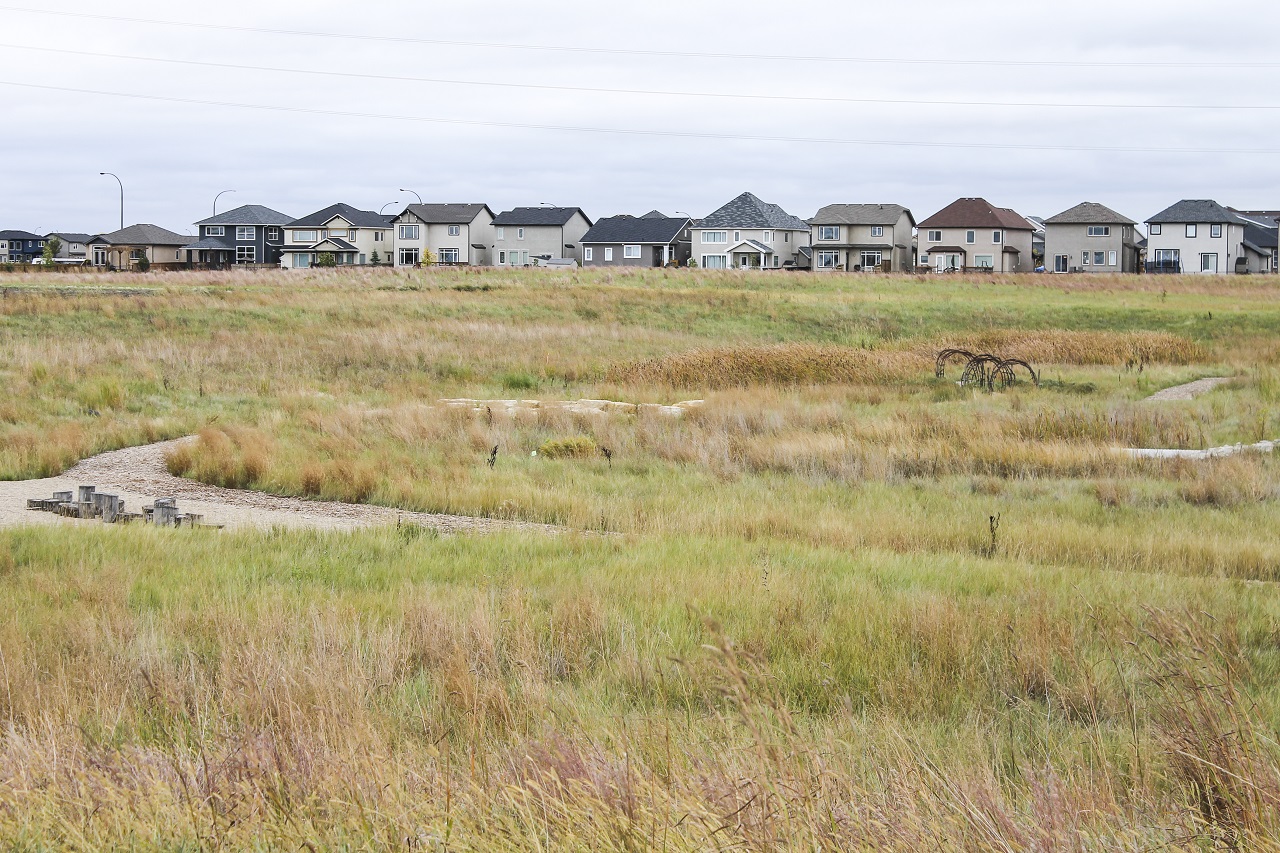Inviting nature to play
Creating outdoor spaces where imaginations can run wild

Boulders, tree stumps, grassy swales, wood chip trails, native plants.
These are things you’d expect to find in parks and nature areas, not in urban playgrounds. But more communities are seeing the value in incorporating these natural elements into community spaces.
Recent research backs this growing trend. Encouraging kids to get outside, get active and even get dirty is critical in curing the next generation from what’s dubbed the “nature-deficit disorder.”
American author Richard Louv coined the term “nature-deficit disorder” in his well-known book Last Child in the Woods, first published in 2005. The term describes the increasing divide between youth and the natural world, and how it’s harming the environment, childhood health and society as a whole.
When kids do escape outside, they’re often hard pressed to find places to go. Urban expansion, concrete and asphalt are what greets them. Natural wooded areas, fields and even empty lots are becoming scarce, making nature less accessible – and relatable – for our potential future conservationists.
“I grew up playing in the outdoors, in places where not everything was mowed or manicured,” says Koblun, manager of Native Plant Solutions (NPS), a consulting branch of Ducks Unlimited Canada (DUC) and a leader in science-based treatment wetland systems
Koblun’s encouraged to see natural elements used more and more to connect kids and families with nature.
Koblun’s seen this interest grow, firsthand, through his NPS role. After NPS incorporates nature-like stormwater ponds in new developments, the community enjoys benefits such as improved water and water quality, wildlife and an attractive focal point. The evolution to introduce even more natural elements into these urban landscapes, including playgrounds, just seems…well, natural, to Koblun.
“It’s a new tool in the landscape architects’ toolbox.”
One example is in Winnipeg’s Sage Creek residential development, where the developer, Qualico, took it one step further, literally.
After NPS had completed constructing 13 naturalized stormwater ponds and planting native prairie grasses, Qualico enlisted the expertise of Winnipeg-based landscape architecture firm McGowan Russell to design a new nature trail to give the residents more active opportunities. Qualico saw the potential to develop the trail within an existing dry pond that is used to hold water after extreme rain events. Most of the time, it remains dry.
McGowan Russell Group designed the nature trail to include wood stepping logs with wood sourced from southern Manitoba; limestone boulder stepping stones from a local quarry and willow tunnels along a wood chip mulch pathway.
“We added stations along the trail to provide unique play areas,” says Aaron Hirota, senior landscape architect, McGowan Russell Group. “We buried the logs into the ground at varying heights so kids can climb and jump, and put the boulders in spiral pattern so it could also be used as a maze. We plan to train climbing vines around the willow loops so eventually these will form a natural tunnel.”
Qualico has since added interpretive signs along the trail to provide visitors with information about the project.
“I enjoy taking my daughter out there,” says Hirota, who happens to live in the Sage Creek development.
It’s not just child’s play on the nature trail. Amidst the whispering prairie grasses, kids and adults alike are enjoying the textures, sounds, wildlife and other benefits that nature brings into unstructured play.
At the Sage Creek site, a simple walk is now an adventure – where imaginations are free to roam.



